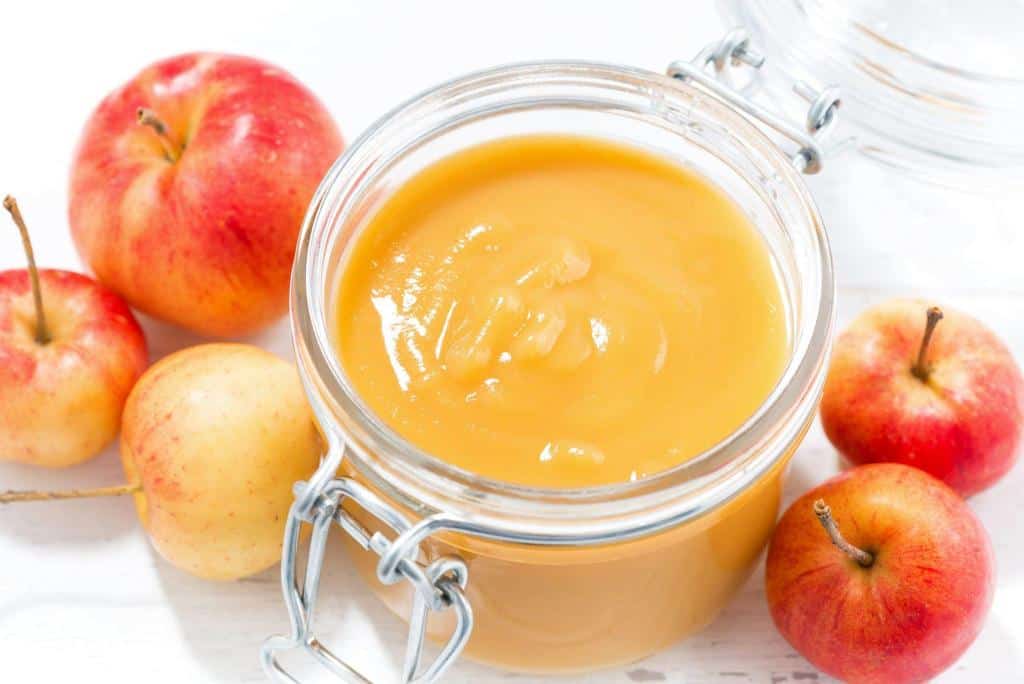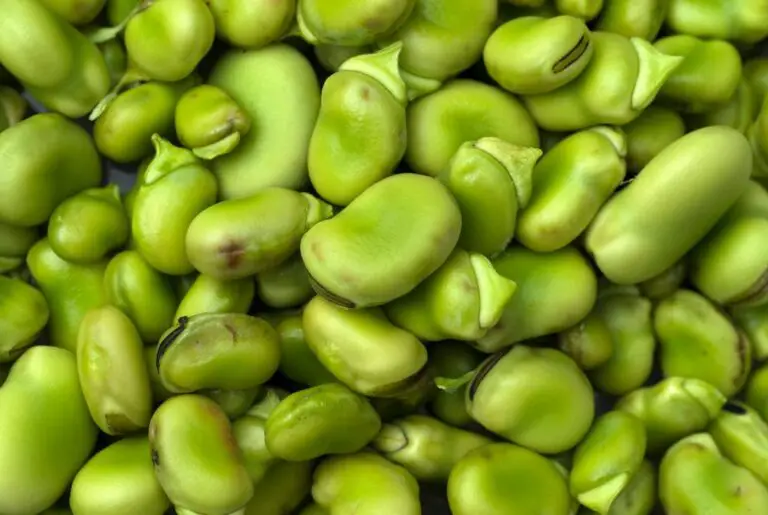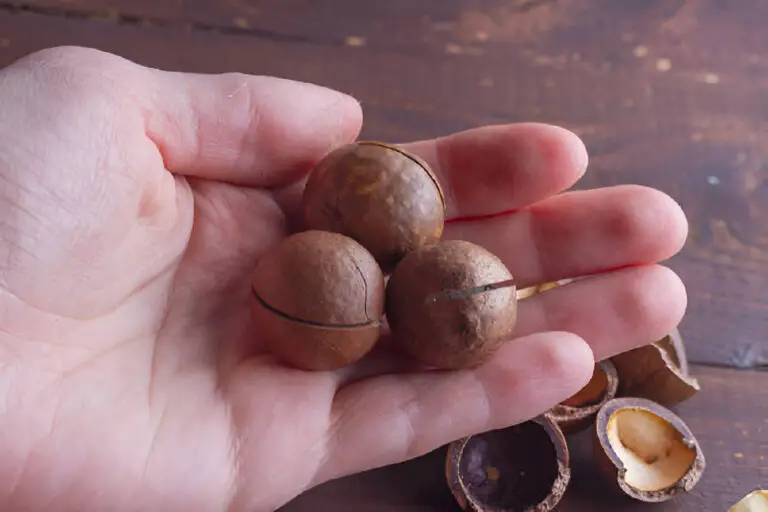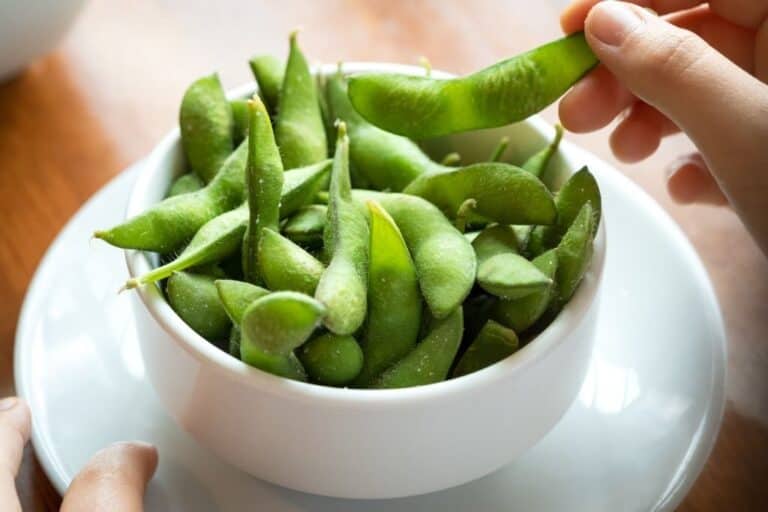How Long Is Applesauce Good After Opening? Keeping It Fresh

In the world of delicious and versatile treats, applesauce stands out as a timeless favorite. Whether spooned onto morning pancakes, blended into mouthwatering recipes, or enjoyed straight from the jar, its tangy-sweet goodness has won hearts across generations. But as we savor this delightful creation, a common query lingers: how long does the enchantment last after cracking open that lid?
Once opened, the shelf life of applesauce depends on how it is stored. Opened applesauce can last at room temperature for about 2 hours. Opened, homemade applesauce (not canned) should last 4-6 days in the refrigerator, while canned or bottled applesauce can last longer. If uneaten applesauce is not returned to the refrigerator or freezer within 2 hours, it should be discarded.
Fear not, for we’re about to embark on a journey into the realm of applesauce shelf life, revealing the secrets to maintaining its freshness long after the initial opening. So, let’s dive into the tantalizing world of post-opening applesauce magic and uncover the art of savoring each dollop.
Understanding Shelf Life of Applesauce
Before we dive into the specifics of how long applesauce lasts after opening, it’s crucial to understand its general shelf life. Shelf life refers to the duration during which a food item, like applesauce, maintains its quality and safety under optimal conditions. It’s that period when the product is at its best, both in terms of taste and nutritional value.
Several factors play a role in determining how long your applesauce remains fresh. These include the ingredients used, the presence of preservatives, and the type of packaging. The balance of these elements can significantly affect the longevity of your beloved applesauce.
While the initial packaging does play a role, proper storage is the key player in extending the shelf life of your opened applesauce. It’s not just about popping the lid back on; it’s about considering factors like temperature and packaging to ensure your applesauce maintains its quality.
Unopened applesauce, stored in a cool and dry place, can last for an impressive amount of time—usually around 1 to 2 years beyond the purchase date. This extended shelf life is due to the preservatives often added to commercially packaged applesauce.
However, once that jar of applesauce has been cracked open, the clock starts ticking. The shelf life diminishes due to exposure to air, light, and potential contaminants. Yet, fear not! By following a few simple guidelines, you can maximize the freshness of your opened applesauce.
How Long Is Applesauce Good After Opening?
The duration for which opened applesauce remains good largely depends on how it’s stored. The key to prolonging its shelf life is to minimize the factors that contribute to spoilage. Here’s a breakdown of the estimated timelines:
- Refrigeration is vital. Once opened, promptly refrigerate the applesauce. This will help preserve its quality and flavor. Generally, opened applesauce can last for about 1 to 2 weeks in the refrigerator.
- Check for Signs of Spoilage: Before consuming opened applesauce, use your senses to assess its condition. If you notice any off-putting odor, unusual color changes, or mold growth, it’s best to discard it.
- Optimal Storage: To keep your applesauce fresh for as long as possible, consider transferring the contents of the opened jar into an airtight container before refrigeration. This minimizes exposure to air and helps retain its taste and texture.
| Storage Method | Approximate Lifespan |
| Opened jar in fridge | 1 to 2 weeks |
| Airtight container | Extended freshness |
Packaging and Applesauce Longevity

The type of packaging your applesauce comes in can have a substantial impact on how long it stays fresh.
| Packaging Type | Shelf Life Impact |
| Glass Jars | Offers good protection from light and air, aiding preservation. |
| Plastic Containers | Can be effective with proper sealing, but light exposure may be an issue. |
| Pouches | Generally preserve freshness well due to their barrier properties. |
Active packaging, with its innovative design, often provides superior protection against oxygen and moisture, two factors that can lead to spoilage. Glass jars and plastic containers may allow some exposure, potentially shortening shelf life.
The presence of airtight seals and resealable packaging is crucial to extending shelf life. Airtight seals prevent unnecessary air from entering the container, while resealable packaging allows you to close it securely after each use.
Extending the Lifespan of Applesauce
If you find yourself with more applesauce than you can enjoy within the typical 1–2 week window, there are methods you can employ to extend its shelf life:
- Freezing: Freezing applesauce is a brilliant option. It can last for up to 6 months in the freezer without significant loss of quality. Transfer the applesauce to a freezer-safe container, leaving some space for expansion, and ensure a tight seal to prevent freezer burn.
- Preserving Techniques: If you’re an avid DIY enthusiast, consider making your own applesauce preserves. Canning or using other preservation methods can significantly extend the shelf life, allowing you to enjoy your homemade delight for months to come.
Signs of Spoilage and Safety Concerns
Knowing when applesauce has gone bad is crucial to preventing any health risks. If you notice any of the following signs, it’s best to err on the side of caution and discard the applesauce:
- Off Odor: If the applesauce emits an unusual or unpleasant smell, it’s a sign that spoilage has occurred.
- Unusual Texture: Spoiled applesauce might develop an odd texture, becoming slimy or grainy instead of the usual smooth consistency.
- Mold Growth: The presence of mold, visible as fuzzy patches on the surface, indicates that the applesauce is no longer safe to consume.
- Discoloration: Any significant color changes, such as darkening or unusual hues, suggest that the applesauce has deteriorated.
Storage Methods for Extended Freshness
How you store your opened applesauce plays a critical role in its longevity.
- Refrigeration vs. Room Temperature Storage: Refrigeration is your best friend here. Applesauce stored in the fridge maintains its freshness for a significantly longer time compared to being left at room temperature.
- Ideal Temperature Range for Preserving Applesauce: Aim to store your applesauce between 32°F and 40°F (0°C and 4.4°C) to keep it at its best.
- Tips for Preventing Cross-Contamination: To avoid contamination, always use clean utensils and ensure the jar’s rim is clean before sealing.
Applesauce and Best By Dates
Understanding the dates on the label can provide valuable insight into your applesauce’s freshness.
- Understanding “Best By,” “Use By,” and Expiration Dates: These dates aren’t arbitrary; they’re carefully calculated estimations of when your applesauce is at its peak quality.
- The “best by” date suggests peak quality, but the product can still be safe and enjoyable after that date. The “use by” or “expiration” date indicates when it’s safest to consume for optimal quality.
- Consuming applesauce before the “best by” date ensures optimal flavor and texture. After that date, it might gradually lose some quality but still be safe to eat.
- If your applesauce looks, smells, and tastes fine beyond the labeled date, it’s usually safe to eat. Trust your senses, but always prioritize safety.
Preservatives and Additives in Applesauce
When it comes to store-bought applesauce, you’ll often encounter various preservatives that help extend its shelf life. These can include citric acid, ascorbic acid (Vitamin C), and even small amounts of artificial preservatives like potassium sorbate.
Natural vs. Artificial Additives
While some applesauce brands focus on using natural preservatives, others opt for artificial additives. Natural additives, like lemon juice, can help maintain freshness while also offering nutritional benefits. However, artificial additives can sometimes raise concerns about their impact on health.
Effects of Preservatives
These additives play a significant role in prolonging the shelf life of applesauce. They inhibit the growth of harmful microorganisms, delaying spoilage. While some may worry about the health implications of additives, regulatory bodies often ensure that approved additives are safe when used within recommended limits.
Homemade Applesauce Longevity
Homemade applesauce, crafted with care in your own kitchen, may have a slightly shorter shelf life compared to store-bought counterparts. This is due to the absence of commercial-level preservation techniques and precise packaging.
The method of preparation you choose can affect the shelf life of homemade applesauce. Cooking the applesauce and using proper canning or freezing techniques can help preserve it for longer periods of time.
To maximize the shelf life of your homemade applesauce, store it in airtight containers in the refrigerator. Freezing portions that you won’t consume immediately can also extend their freshness.
Read: How Long Does Homemade Applesauce Last in the Fridge After Opening?
Safety Concerns and Consumption
Consuming spoiled applesauce can pose health risks, just like any other perishable food. Bacteria, molds, or yeasts can grow in improperly stored or contaminated applesauce, leading to foodborne illnesses.
Eating spoiled food, including applesauce, can result in symptoms like nausea, vomiting, diarrhea, and abdominal pain. In severe cases, foodborne illnesses can lead to more serious health complications.
To determine if your applesauce is safe to eat, rely on your senses. If it looks or smells off or has an unusual texture, it’s best to discard it. When in doubt, it’s better to be cautious than sorry.
In Conclusion
Applesauce, known for its delightful and healthful attributes, remains a favorite among diverse palates. While its post-opening shelf life is moderately restricted, employing effective storage techniques can substantially prolong its longevity.
Through the swift act of refrigeration, spotting applesauce spoilage signs, and contemplation of freezing or preservation methods, you can indulge in the goodness of applesauce over an extended duration while upholding both safety and flavor.
It’s worth underscoring that your sensory faculties act as steadfast allies in determining the applesauce’s condition. In instances of uncertainty, relying on your instincts to opt for a fresh jar is a prudent choice.
Unveiling the secrets to preserving opened applesauce lies at the core of extending its shelf life. Though slightly constrained, this period can be significantly prolonged with proper care. A vigilant eye for potential applesauce spoilage signs is a must-have practice, as is prompt refrigeration after opening.
Notably, understanding the distinction between “Best by” and “Use by” dates for applesauce fosters informed decisions, and the discourse around safe consumption of moldy applesauce underscores responsible culinary choices. This proactive approach aids in prolonging applesauce quality after opening, while optimal storage practices act as guardians against untimely spoilage.
Its shelf life after opening, though somewhat limited, can be extended through proper storage techniques. By refrigerating promptly, checking for spoilage signs, and considering freezing or preserving methods, you can enjoy your applesauce for an extended period while ensuring safety and flavor. Remember, your senses are your best allies in determining whether applesauce has gone bad. When in doubt, trust your instincts and opt for a fresh jar.
A proactive stance in checking the applesauce’s condition aligns with the principle of safe consumption, especially when pondering the optimal storage for opened applesauce. Therefore, when the question of how to prolong the enjoyment of your applesauce arises, embracing your sensory-savvy nature becomes the cornerstone of your culinary journey.
FAQs on How Long Is Applesauce Good After Opening
Is it safe to eat applesauce after the “best by” date has passed?
The “best by” date indicates optimal quality, but applesauce can still be safe to eat beyond this date if it shows no signs of spoilage.
Can you store opened applesauce at room temperature?
It’s generally safer to refrigerate opened applesauce to extend its shelf life and prevent bacterial growth.
What should I do if my applesauce changes color?
While oxidation isn’t always harmful, it’s best to discard applesauce if it exhibits additional signs of spoilage.
Can I add preservatives to homemade applesauce for a longer shelf life?
Yes, certain natural preservatives like lemon juice can be added to homemade applesauce to help extend its shelf life.
Can you freeze applesauce for long-term storage?
Yes, freezing is a great option. Transfer it to a freezer-safe container, leaving room for expansion. Frozen applesauce can last up to 6 months without significant quality loss.
Is it safe to consume applesauce with mold on the surface?
No, it’s not safe. Mold indicates spoilage, and consuming moldy applesauce can lead to health risks. Discard any applesauce showing mold growth and opt for a fresh batch.





